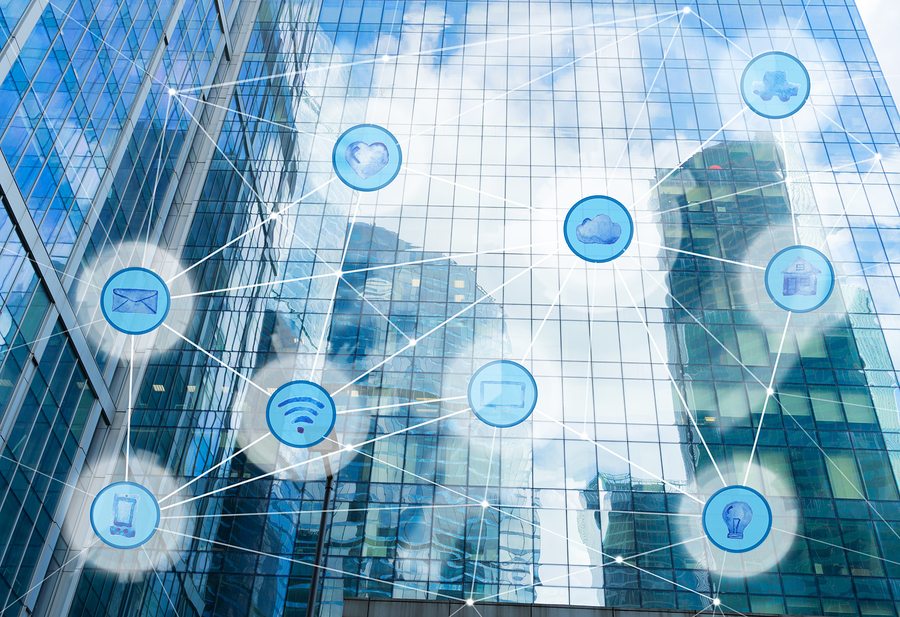A/C, Plumbing and…Data? Using the IoT in Commercial Real Estate
October 25, 2017

It’s easy to spot trendy new tech at any modern office building, shopping mall or hotel, whether it’s automated lighting, Wi-Fi lounges or charging stations for electric cars.
But less obvious are the hundreds of Internet of Things (IoT) sensors that represent a game changer for commercial real estate.
These IoT sensors work behind the scenes to improve operating efficiency in buildings, enhance the experiences of tenants, visitors and customers, and save money.
Get “Smart”
IoT in commercial real estate is creating a new generation of “smart” buildings.
There’s been an explosion of digital sensors that monitor everything from room temperatures and elevators to security cameras and door locks. IoT connects sensors and devices that automate control, remotely monitor performance and collect data and metrics.
IoT use is burgeoning across transportation, healthcare, utilities and housing. But the commercial real estate industry recently became the highest user of IoT.
There were 733.7 million connected things installed in commercial buildings in 2017, according to a Gartner estimate. That number will reach 1 billion next year.
A 2017 Forbes article said this about the IoT in commercial buildings: “Whatever business you are operating inside a commercial building, if you aren’t collecting, storing, using and learning from data, then you are not doing your job.”
Make a Case for Tech
Property owners and managers use IoT to create operating efficiencies and make the most use of space.
For instance, office workers no longer need to grab an extra sweater in a cold area: IoT sensors maintain steady temperatures, even as more people enter and exit a space.
According to Gartner, IoT can “reduce the cost of energy, spatial management and building maintenance by up to 30 percent” in large business parks or mixed-use projects.
So, what’s the challenge for property owners and managers? Deciding where to invest to deliver the biggest ROI. No one wants to throw money at technology simply for the sake of having cool gadgets.
It’s important to analyze the business case for adding technology. For example, many facilities have made the switch to energy-efficient LED light fixtures. The only way to capture more energy savings is to leverage sensors and IoT to improve efficiency.
In office buildings, IoT is boosting tenant experience. Some landlords use it to show “real-time” availability of parking spaces and conference rooms.
An Analyst’s Dream
Another valuable role of IoT in commercial real estate? Data collection.
Sensors collect data that allow property owners and managers to paint a detailed picture of who’s using a building, including when and how.
Shopping malls, for instance, can use sensors to track foot traffic. Mall managers can use that information to drive decision-making related to renovations or re-merchandising. They could also justify charging higher rents for busier areas.
Commercial real estate has become a heavily data-driven industry. Property owners and investors now have massive amounts at their fingertips. But how can they avoid getting buried under that data? Transform it into useful information to reduce costs and add value.
Understanding the impact of this shift, and how to use IoT and other internet-enabled technology, can create and keep a competitive advantage in the commercial retail space.
Stay informed with Aprio.
Get industry news and leading insights delivered straight to your inbox.
